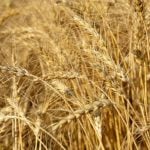MarketsFarm — Canadian pea and lentil acres only saw slight adjustments in the latest acreage estimates Tuesday from Statistics Canada, with little market news to draw in extra area since the previous report in April.
“When you see all the hard commodities, their prices are fantastic. That’s the main reason why growers switch,” said Marcos Mosnaim of Mercaris Commodities, citing rises in wheat and canola prices.
“When you look at numbers from June, farmers don’t have much time to switch (crops)…The numbers are a good approximation of what we already have.”
Read Also

U.S. grains: Soybeans rise on China demand hopes; corn and wheat rebound
Chicago Board of Trade soybean, corn and wheat futures rose on Monday on signs of progress towards the end of a record-long U.S. government shutdown, along with expectations of a revival of U.S. soybean exports to China, analysts said.
The largest decline for any pulse crop was in chickpeas, for which the estimated area fell by 26,700 acres, to 186,000, down 12.6 per cent from the April estimate and down from the 297,800 acres seeded the previous year.
Fewer acres were also seeded for edible beans at 373,000, down 40,600 acres and well below the 457,200 acres seeded in 2020. Dry field peas also showed a decrease in seeding, losing 19,100 acres from April at 3.82 million acres. Canadian farmers seeded 4.26 million acres of peas in 2020.
“Right now, (demand for pulses) is very, very quiet,” Mosnaim said. “It’s not just Canadian products going up in price, all products have gone up in price. Freights have gone up in price big time. Any imports from anywhere have gone up in price.
“That can take a toll on the credit limit buyers have. They probably have to work with smaller inventories and focus on the products that are more profitable for them.”
The news wasn’t all bad for pulses. Lentil acres increased by 87,600 acres, representing a 2.1 per cent rise from April, to 4.31 million. That’s also up slightly from the 4.23 million acres of lentils seeded the previous year.
As for how this year’s pulse crops will fare, Mosnaim is not optimistic due to long-lasting hot and dry weather in the Prairies.
“It’s still early, but (conditions are) not great. When you see the reports, most areas are reporting below-average (conditions)…In Saskatchewan, Alberta and Manitoba, they are not seeing good crop conditions,” he said.
— Adam Peleshaty reports for MarketsFarm from Stonewall, Man.
















